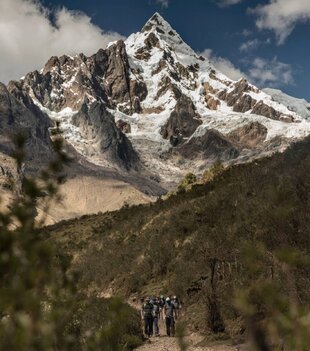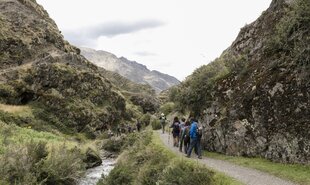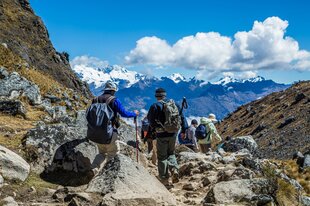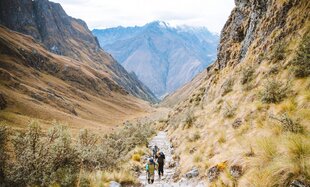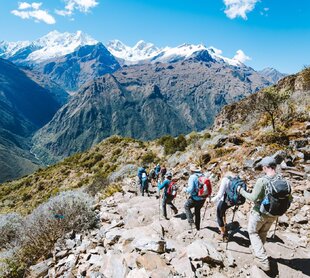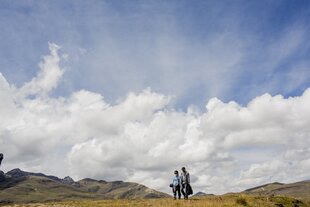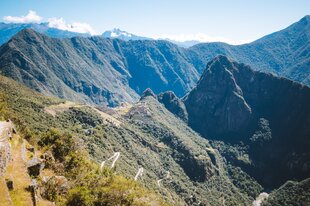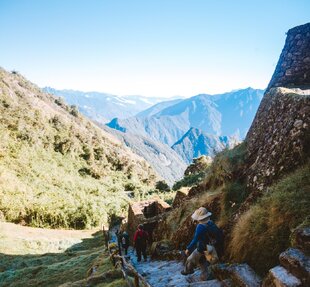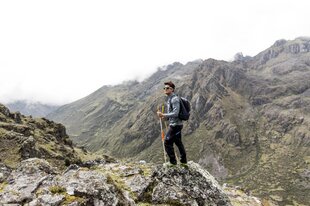Formed by the collision of the Nazca and South American tectonic plates, the Inca region traverses some of the most geologically and ecologically diverse landscapes in the Andes. The full Classic Inca Trail stretches from Cusco to the great Machu Picchu, navigating through dramatic granite peaks, deep glacial valleys, and fertile cloud forests.
Classic Inca Trail
The official Inca Trail isn’t just the most famous trek in South America, but a living cultural and spiritual experience that takes adventurers along ancient stone pathways through the cloud forests of the Andes Mountains.
Spanning approximately 43 kilometres (26 miles), the Inca Trail stretches through a stunning sequence of Andean landscapes and Inca ruins. We don’t start in Cusco itself, but transport you to a start point in the Cusichaca Valley. Over the course of 5 days, the pinnacle of your trek will be the breathtaking Dead Woman’s Pass. 4,215 meters (13,828 feet) this is the trek's highest point. Along the way, historic sites include the Ruins of Runkurakay and the stone fortress of Saycamarca - a spectacular site standing in the Andes sky. The trail culminates at Inti Punku: the Sun Gate and arrival point overlooking the region's pinnacle.

Classic Inca Trail Permits
Due to the understandable popularity of such a hotspot, UNESCO Heritage Site status is maintained by limiting access to the Inca Trail to no more than 500 walkers per day. Permits often sell out many months in advance, particularly in the dry season from May to September. Fortunately, there are some alternative routes which Aqua-Firma can make use of, such as the Salkantay Trek and the Lares Trek. While these routes aren’t as famous, they are most certainly equally as picturesque and less frequented.
Salkantay Trail
The Salkantay Trail offers dramatic mountain scenery, glacial lakes and lush tropical valleys from Mollepata to Machu Picchu, making it an incredible alternative. Usually taking 5 days covering a distance of 74 kilometres (46 miles), this trek takes hikers over the stunning Salkantay Pass at 4,650 meters (15,255 feet).
You can enjoy views of the snow-capped Salkantay Mountain, one of the most sacred peaks in Inca mythology, as well as turquoise glaciers at Humantay Lagoon, coffee plantations of Santa Teresa, optional hot springs at Cocalmayo and cloud forests throughout the trail. Unlike the Inca Trail, no special permit is needed. This makes it more flexible and less crowded whilst still offering an unforgettable mix of adventure, culture, and natural beauty
The Lares Trek (Weavers’ Route)
The Lares Trek is a stunning and culturally rich alternative, starting near the town of Lares, roughly 3 hours from Cusco. Also known as the Weavers’ Route, this trek takes you through remote Andean villages, high mountain passes and natural hot springs. It offers a real look into traditional Quechua life. Trekkers usually stay in community lodges or camp near local settlements. They share in the daily rhythms of Andean culture while enjoying breathtaking peaks, alpacas, and clear lakes.
It is common to see llamas and alpacas grazing on the mountain slopes of these Inca territories. Hummingbirds, Andean condors, and the brightly coloured cock-of-the-rock dart through the misty forests. The rare spectacled bear and agile vizcacha also live in these areas, along with countless orchids, bromeliads, and mosses.
* * * *
Winding through the heart of the Andes, the Inca trails showcase the brilliance and resilience of one of history's greatest civilisations. Every stone path, terraced valley, and sacred ruin represents the Incas' skill in engineering, architecture, and their connection with nature. These trails are more than just routes; they are living links to the past, guiding modern travellers through stunning landscapes once traversed by ancient pilgrims. At the end of their journey, emerging from the mist and mountains, lies the ultimate reward: Machu Picchu.

